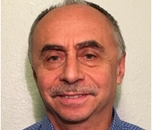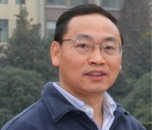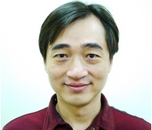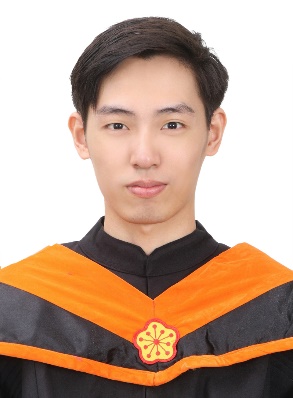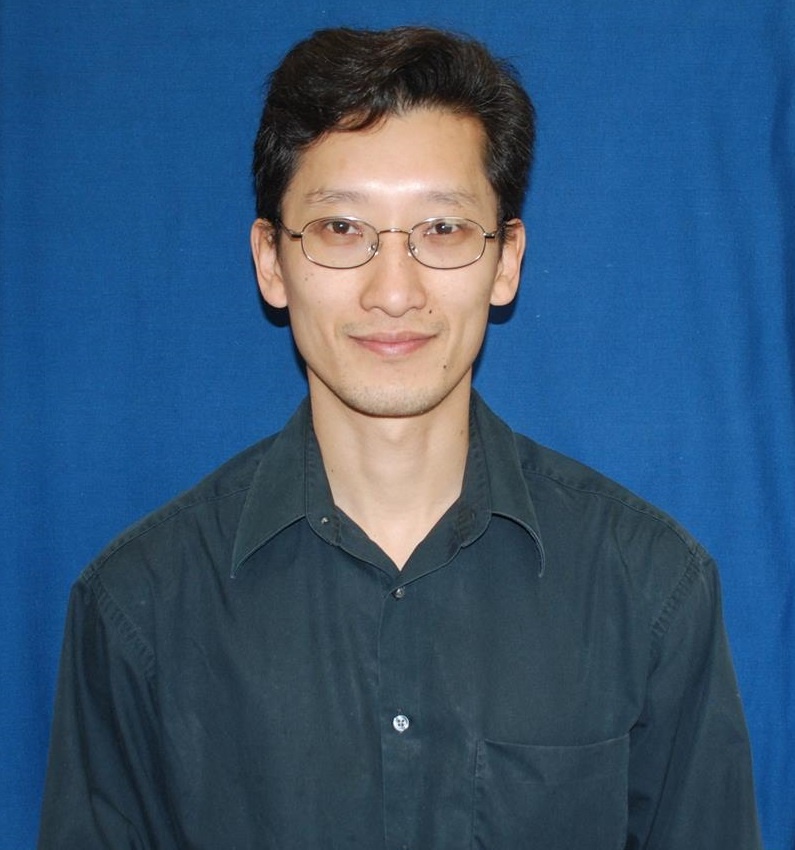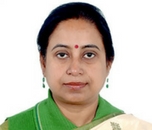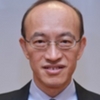Theme: Quarrying Novelties of Material Science and Engineering
MatScience 2018
ConferenceSeries Ltd launches its Materials Science conference in Asia Pacific region. With the overwhelming joy, we invite you to the 18th International Conference and Exhibition on Materials Science and Engineering in Osaka, Japan during May 28-30, 2018
Theme of the conference, “Quarrying Novelties of Material Science and Engineering” is designed in such a way to uncover the basic principles that lead to the drastic emergence and technologies in the field of Materials Science and Nanotechnology. We hope MatScience 2017 is the best platform to discuss the basic principles involved in the development of Materials Science and Engineering. As this conference deals with the basics concepts, students, delegates, academicians and business people can attend the conference to root up the knowledge and excel in this field.
ConferenceSeries Ltd organizes a conference series of 3000+ Global Events with over 1000+ Conferences, 1000+ Symposiums and 1000+ Workshops in USA, Europe, Middle East & Asiapacific with support from 1000 more scientific societies and publishes 700+ Open access journals which contains over 30000 eminent personalities, reputed scientists as editorial board members.
Market Report:
The global market for Aluminum systems and metal powder witnessed a rapid growth in 2013, and is projected to grow at a CAGR of 5.65% and 3.80% from 2015 to 2020, to reach USD 147.13 Billion and USD 4,062.2 Million by 2020 respectively. Asia-Pacific dominated the market with a share of 45% in 2014; this market is driven by increasing competition, consumer awareness, rising consumer spending, demand for value-added product, and technological advancements. The Asia-Pacific region is the fastest-growing market with the highest CAGR of 5.01% during the forecast period; this market is driven by increasing competition, consumer awareness, rising consumer spending, demand for powder metallurgy manufactured components, and technological advancements.
Target Audience:
-
Materials Science Engineers
-
Nanotechnology Engineers
-
Researchers from Mining and Metallurgy field
-
Scientists and students from Tissue Science engineering and Biomaterials
-
Delegates from Materials Science and Nanotechnology Associations
-
Professors, Students, Researchers and Technical Staff from Materials Science and Nanotechnology Department
-
Delegates from Materials Science, Semiconductor, Polymer, Fuel Cell and Energy related industries
ConferenceSeries Ltd launches its Materials Science conference in Asia Pacific region. With the overwhelming joy, we invite you to the 18th International Conference and Exhibition on Materials Science and Engineering in Osaka, Japan during May 28-30, 2018
Theme of the conference, “Quarrying Novelties of Material Science and Engineering” is designed in such a way to uncover the basic principles that lead to the drastic emergence and technologies in the field of Materials Science and Nanotechnology. We hope MatScience 2017 is the best platform to discuss the basic principles involved in the development of Materials Science and Engineering. As this conference deals with the basics concepts, students, delegates, academicians and business people can attend the conference to root up the knowledge and excel in this field.
ConferenceSeries Ltd organizes a conference series of 3000+ Global Events with over 1000+ Conferences, 1000+ Symposiums and 1000+ Workshops in USA, Europe, Middle East & Asiapacific with support from 1000 more scientific societies and publishes 700+ Open access journals which contains over 30000 eminent personalities, reputed scientists as editorial board members.
Market Report:
The global market for Aluminum systems and metal powder witnessed a rapid growth in 2013, and is projected to grow at a CAGR of 5.65% and 3.80% from 2015 to 2020, to reach USD 147.13 Billion and USD 4,062.2 Million by 2020 respectively. Asia-Pacific dominated the market with a share of 45% in 2014; this market is driven by increasing competition, consumer awareness, rising consumer spending, demand for value-added product, and technological advancements. The Asia-Pacific region is the fastest-growing market with the highest CAGR of 5.01% during the forecast period; this market is driven by increasing competition, consumer awareness, rising consumer spending, demand for powder metallurgy manufactured components, and technological advancements.
Target Audience:
- Materials Science Engineers
- Nanotechnology Engineers
- Researchers from Mining and Metallurgy field
- Scientists and students from Tissue Science engineering and Biomaterials
- Delegates from Materials Science and Nanotechnology Associations
- Professors, Students, Researchers and Technical Staff from Materials Science and Nanotechnology Department
- Delegates from Materials Science, Semiconductor, Polymer, Fuel Cell and Energy related industries
MATSCIENCE 2018

Dear Materials Science Industry Colleagues, Scientists and Friends,
As a Keynote Speaker and member of the Organizing Committee, I am delighted to invite you to attend the 18th International conference and Exhibition on Materials Science and Engineering, which is to be held during May 28-30, 2018 at Osaka, Japan. The MatScience 2018 brings together Material science industry colleagues, scientists, researchers, regulatory experts from around the globe to bring to you the cutting edge information for the development of Materials Science and Engineering.
The 18th International conference and Exhibition on Materials Science and Engineering is designed to bring forth the most up to date information for the development of Materials. Key aspects will include Nanotechnology and marketing considerations, as they relate to what it will take to bring these Materials altering products to the highly regulated Western Markets.
Please join your peers from around the world for this wonderful opportunity to reach the largest assembly of participants from the Materials Science community, meet with thought leadership experts, share your new research, and show off your cutting edge technology at this 3-day event.
We look forward to seeing you in Osaka, Japan at the18th International conference and Exhibition on Materials Science and Engineering Conference.
Your presence and deliberation will make this conference remarkably successful in all aspects of Materials Science and Engineering.
Yoshio Ueda
Professor
Osaka University, Osaka, Japan.
Track 1: Fundamentals of Materials Science
This session offers a strong introduction to fundamental concepts on the source of material science. It delivers the central issues of materials science, and includes innovative research on Atomic and Nano structures and also micro and macro structures. The fundamentals of material science also deal with the Crystallography, bonding properties, material synthesis and with thermodynamic and kinetic properties.
Relevant Conferences:
Materials Research Conference and Material Technology Conference February 20-21, 2017 Berlin, Germany; Smart Materials Conference and Structures Conference March 20-22, 2017 Orlando, USA; Nanomaterials Conference March 30- 31, 2017 Madrid, Spain; Polymer Science Conference and Engineering Conference May 8-9, 2017 Barcelona, Spain; Material Science Conference and Engineering Conference June 12-14, 2017 Rome, Italy; Ceramics Conference and Composite Materials Conference June 26-27, 2017 Madrid, Spain; Materials Science & Engineering Meeting August 21-23, 2017 Beijing, China; Advanced Materials Research January 20-22, 2017, Hong Kong; Nanotechnology and Materials Science April 05-07, 2017 Barcelona, Spain; American Ceramic Society, American Composites Manufacturers Association, Australasian Society for Biomaterials and Tissue Engineering, Australasian Ceramic Society, Australasian Society for Biomaterials and Tissue Engineering, Brazilian Composite Materials Association, Canadian Biomaterials Society, Federation of European Materials Societies, International Organization of Materials.
Track 2: Materials in Research
The Materials in research presents several important topics on Nanomaterials and Biomaterials. It deals with developments and challenges in Electronic, Optical and Magnetic Materials and prospects that have increased from Computational Materials Science and Materials Theory. The developments of surface science and engineering are also discussed in this session.
Relevant Conferences:
Materials Research Conference and Material Technology Conference February 20-21, 2017 Berlin, Germany; Smart Materials Conference and Structures Conference March 20-22, 2017 Orlando, USA; Nanomaterials Conference March 30- 31, 2017 Madrid, Spain; Polymer Science Conference and Engineering Conference May 8-9, 2017 Barcelona, Spain; Material Science Conference and Engineering Conference June 12-14, 2017 Rome, Italy; Ceramics Conference and Composite Materials Conference June 26-27, 2017 Madrid, Spain; Materials Science & Engineering Meeting August 21-23, 2017 Beijing, China; Advanced Materials Research January 20-22, 2017, Hong Kong; Nanotechnology and Materials Science April 05-07, 2017 Barcelona, Spain; Society of Materials Science, Federation of Materials Societies, International Union of Crystallography, International Organization of Materials, Metals and Minerals Societies, International Union of Societies for Biomaterials Science and Engineering (IUSBSE), Japan Society for Composite Materials, Materials Research Society, Society for Biomaterials, Society for the Advancement of Material and Process Engineering, Society of Materials Science
Track 3: Materials Science and Engineering
Materials Science provides a comprehensive theoretical and practical review of advanced materials design and processing. The research on electronic and photonic materials is the base of devices which exploit electric charge or light which delivers faster and cheaper equipment’s for communication and information technologies. Nanotechnology is defined by the National Nanotechnology Initiative, in this theory the materials are engineered from any chemical substance, semiconductor Nano crystals, carbon fullerenes and organic dendrimers. Nanoscale materials seem in trade as consumer and industrial products and similarly as Novel drug delivery formulations. The concept of polymers and soft materials comprise of computational, theoretical and experimental approaches.
Relevant Conferences:
Materials Research Conference and Material Technology Conference February 20-21, 2017 Berlin, Germany; Smart Materials Conference and Structures Conference March 20-22, 2017 Orlando, USA; Nanomaterials Conference March 30- 31, 2017 Madrid, Spain; Polymer Science Conference and Engineering Conference May 8-9, 2017 Barcelona, Spain; Material Science Conference and Engineering Conference June 12-14, 2017 Rome, Italy; Ceramics Conference and Composite Materials Conference June 26-27, 2017 Madrid, Spain; Materials Science & Engineering Meeting August 21-23, 2017 Beijing, China; Advanced Materials Research January 20-22, 2017, Hong Kong; Nanotechnology and Materials Science April 05-07, 2017 Barcelona, Spain; Australasian Society for Biomaterials and Tissue Engineering, Australasian Ceramic Society, Australasian Society for Biomaterials and Tissue Engineering, Japan Society for Composite Materials, Materials Research Society, Society for Biomaterials, Society for the Advancement of Material and Process Engineering
Track 4: Materials in Industry
Material science has numerous applications which include polymer materials, ceramics and composites. Glasses and ceramics use covalent and ionic-covalent types with SiO2 as a base for bonding. Ceramics are as soft as clay or as hard as stone and concrete and crystalline in form. Most of the glasses have a metal oxide merged with silica. To gorilla glass steel reinforced concrete is a structural element with wide range of applications. Plastics Material is manufactured by raw materials of polymers. Sphere plastics are materials with unique characteristics, such as ultra-high strength, electrical conductivity, electro-fluorescence and high thermal stability. Plastics are divided on the basis of its properties and applications. Carbon fiber strengthened plastic market reached $17.3 billion in 2014, and further the market is estimated to grow at a five-year CAGR (2015 to 2020) of 12.3%, to reach $34.2 billion in 2020. The competition in the global carbon fiber and carbon fiber reinforced plastic market is intense within a few large players, such as Toray Toho, Mitsubishi, Hexcel, Formosa, SGL carbon, Cytec, Hyosung, etc.
Relevant Conferences:
Advanced Materials Conference and Nanotechnology Conference October 26-28, 2017 Osaka, Japan; Materials Research Conference and Material Technology Conference February 20-21, 2017 Berlin, Germany; Smart Materials Conference and Structures Conference March 20-22, 2017 Orlando, USA; Nanomaterials Conference March 30- 31, 2017 Madrid, Spain; Polymer Science Conference and Engineering Conference May 8-9, 2017 Barcelona, Spain; Material Science Conference and Engineering Conference June 12-14, 2017 Rome, Italy; Ceramics Conference and Composite Materials Conference June 26-27, 2017 Madrid, Spain; Materials Science & Engineering Meeting August 21-23, 2017 Beijing, China; Advanced Materials Research January 20-22, 2017, Hong Kong; Nanotechnology and Materials Science April 05-07, 2017 Barcelona, Spain; American Association for Crystal Growth, American Composites Manufacturers Association, ASTM International, International Advanced research centre for Powdered Metallurgy and new Materials, International Union of Materials Research Societies, International Union of Societies for Biomaterials Science and Engineering (IUSBSE), Materials Research Society, UK Society for Biomaterials
Track 5: Materials in Energy
Energy and sustainability are currently driving science and technology. Concerns on environment and the source of fossil fuel driven researchers to explore technological solutions with alternative forms of energy resource and storing. New materials and material assemblies are the core of this research undertaking. Fuel cells are used in the generation of materials energy. The development and discovery of new materials is intimately connected for the search of cleaner, smaller, cheaper and more efficient energy technologies. The assembly emphases on materials-based solutions to the energy problem through a series of case studies exemplifying improvements in energy-related materials research. Battery technology is strapped more in electric vehicle applications, which need more lightweight, high voltage and fast charging batteries. Solar thermal energy is different from Solar panel or photovoltaic technology. Heat is created by the light from the sun in concentration with solar thermal electric energy generation. Photovoltaic energy converts the sun’s light directly into electricity.
Relevant Conferences:
Advanced Materials Conference and Nanotechnology Conference October 26-28, 2017 Osaka, Japan; Materials Research Conference and Material Technology Conference February 20-21, 2017 Berlin, Germany; Smart Materials Conference and Structures Conference March 20-22, 2017 Orlando, USA; Nanomaterials Conference March 30- 31, 2017 Madrid, Spain; Polymer Science Conference and Engineering Conference May 8-9, 2017 Barcelona, Spain; Material Science Conference and Engineering Conference June 12-14, 2017 Rome, Italy; Ceramics Conference and Composite Materials Conference June 26-27, 2017 Madrid, Spain; Materials Science & Engineering Meeting August 21-23, 2017 Beijing, China; Advanced Materials Research January 20-22, 2017, Hong Kong; Nanotechnology and Materials Science April 05-07, 2017 Barcelona, Spain; International Union of Crystallography, International Organization of Materials, Metals and Minerals Societies, International Union of Societies for Biomaterials Science and Engineering (IUSBSE), Japan Society for Composite Materials, Materials Research Society, Society for Biomaterials, Society for the Advancement of Material and Process Engineering, Society of Materials Science
Track 6: Materials for Energy Applications
The basic vision of Materials for Energy Applications is to enable a changeover to energy system and to create world-recognised assistances in the field of energy applications by fundamental materials research. Biopolymers occur in nature, carbohydrates and proteins are the examples of biopolymers. Organ Implants are used for the transplantation of organs in humans. The profile supports interactions between resources for harvesting, passage and storage, and transformation of energy, and strives to reduce the distance between research and submissions. The Materials for Energy Applications profile comprises many prominent research leaders that are at the research front of their corresponding fields. The terms like bio polymeric materials and organ implants also comes under the category of materials for energy applications. Biomineralization is defined as the creation of inorganic materials with complex form in all groups of organisms from prokaryotes.
Relevant Conferences:
Functional Energy Materials Conference December 06-07, 2017 Atlanta, USA; Japan; Materials Research Conference and Material Technology Conference February 20-21, 2017 Berlin, Germany; Smart Materials Conference and Structures Conference March 20-22, 2017 Orlando, USA; Nanomaterials Conference March 30- 31, 2017 Madrid, Spain; Polymer Science Conference and Engineering Conference May 8-9, 2017 Barcelona, Spain; Material Science Conference and Engineering Conference June 12-14, 2017 Rome, Italy; Ceramics Conference and Composite Materials Conference June 26-27, 2017 Madrid, Spain; Materials Science & Engineering Meeting August 21-23, 2017 Beijing, China; Advanced Materials Research January 20-22, 2017, Hong Kong; Nanotechnology and Materials Science April 05-07, 2017 Barcelona, Spain; Australasian Society for Biomaterials and Tissue Engineering, Australasian Ceramic Society, Australasian Society for Biomaterials and Tissue Engineering, Brazilian Composite Materials Association, Canadian Biomaterials Society, Federation of European Materials Societies, International Organization of Materials, Metals and Minerals Societies
Track 7: Materials for Green Technology
Green technology incorporates a constantly developing group of procedures and materials from techniques for creating energy to non-toxic cleaning products. At present the expectation of this field is to bring innovation and changes in daily life of similar scale to the information technology evolution over past two decades. Sustainability is meeting the needs without conceding the capability of future generations to meet their own requirements. The reduction of waste and pollution by the change in patterns of consumption and production is termed as source reduction. To reduce the use and generation of hazardous substances the invention, design and application of chemical products is known as Green chemistry.
Relevant Conferences:
Functional Energy Materials Conference December 06-07, 2017 Atlanta, USA; Japan; Materials Research Conference and Material Technology Conference February 20-21, 2017 Berlin, Germany; Smart Materials Conference and Structures Conference March 20-22, 2017 Orlando, USA; Nanomaterials Conference March 30- 31, 2017 Madrid, Spain; Polymer Science Conference and Engineering Conference May 8-9, 2017 Barcelona, Spain; Material Science Conference and Engineering Conference June 12-14, 2017 Rome, Italy; Ceramics Conference and Composite Materials Conference June 26-27, 2017 Madrid, Spain; Materials Science & Engineering Meeting August 21-23, 2017 Beijing, China; Advanced Materials Research January 20-22, 2017, Hong Kong; Nanotechnology and Materials Science April 05-07, 2017 Barcelona, Spain; Australasian Society for Biomaterials and Tissue Engineering, Australasian Ceramic Society, Australasian Society for Biomaterials and Tissue Engineering, Japan Society for Composite Materials, Materials Research Society, Society for Biomaterials
Track 8: Nanotechnology in Materials Science
The Interesting things about nanotechnology are that properties of materials change when the size scale of their dimension reaches nanometers. Manufacturing of materials at Nanoscale is done by material scientists to understand the property changes. The field of material science includes characterization and properties of Nanoscale materials. Carbon nanotubes are concerned to the elegance of many scientists worldwide. The small proportions, strength and the outstanding physical properties of these arrangements make them very unique material with a whole range of auspicious applications. The prominence in application of computational methods in discovering various sizes of fullerenes and their isomers is given. The theory of isolated pentagon rule in fullerene chemistry has been publicized. Nanophotonics collects a large group of faculty members to raise new ideas and to carry out collective research with enhanced stimulation.
Relevant Conferences:
Advanced Materials Conference and Nanotechnology Conference October 26-28, 2017 Osaka, Japan; Materials Research Conference and Material Technology Conference February 20-21, 2017 Berlin, Germany; Smart Materials Conference and Structures Conference March 20-22, 2017 Orlando, USA; Nanomaterials Conference March 30- 31, 2017 Madrid, Spain; Polymer Science Conference and Engineering Conference May 8-9, 2017 Barcelona, Spain; Material Science Conference and Engineering Conference June 12-14, 2017 Rome, Italy; Ceramics Conference and Composite Materials Conference June 26-27, 2017 Madrid, Spain; Materials Science & Engineering Meeting August 21-23, 2017 Beijing, China; Advanced Materials Research January 20-22, 2017, Hong Kong; Nanotechnology and Materials Science April 05-07, 2017 Barcelona, Spain; Society of Materials Science, Federation of Materials Societies, International Union of Crystallography, International Organization of Materials, Metals and Minerals Societies, International Union of Societies for Biomaterials Science and Engineering (IUSBSE), Japan Society for Composite Materials
Track 9: Catalytic Materials
Chemical Vapour Deposition has the ability to produce various types of catalytically attractive nano-scale structures by altering the surface assets of massive or even nano-divided substrates. Comparatively new processes such as catalytic, fluidized-bed, rotary, two-step and large spot laser CVD allow the creation of nanoparticles, nanotubes, nanofibers and oriented films. Intensive research is being performed on the production and the preparation of supported catalysts by CVD. Graphene nanofibers are materials that show amazing properties appropriate for a number of progressive energy storage devices as well as chemical procedures. These solids deal with the direct route for the production of large quantities of high quality Graphene. The cost of manufacturing these supplies on a marketable scale presents a major challenge, which we have pursued to overcome via the usage of natural gas as a source of carbon. Catalysts are divided in to two types homogeneous and heterogeneous. The substance that is constant in composition is termed as homogenous mixture, whereas heterogeneous catalysts are solids that are supplemented in to gas or liquid reaction mixtures.
Relevant Conferences:
Materials Research Conference and Material Technology Conference February 20-21, 2017 Berlin, Germany; Smart Materials Conference and Structures Conference March 20-22, 2017 Orlando, USA; Nanomaterials Conference March 30- 31, 2017 Madrid, Spain; Polymer Science Conference and Engineering Conference May 8-9, 2017 Barcelona, Spain; Material Science Conference and Engineering Conference June 12-14, 2017 Rome, Italy; Ceramics Conference and Composite Materials Conference June 26-27, 2017 Madrid, Spain; Materials Science & Engineering Meeting August 21-23, 2017 Beijing, China; Advanced Materials Research January 20-22, 2017, Hong Kong; Nanotechnology and Materials Science April 05-07, 2017 Barcelona, Spain; Australasian Society for Biomaterials and Tissue Engineering, Australasian Ceramic Society, Australasian Society for Biomaterials and Tissue Engineering, Japan Society for Composite Materials, Materials Research Society, Society for Biomaterials, Society for the Advancement of Material and Process Engineering
Track 10: Nanomaterials
Nanotechnologies use very small substances or artefacts. Nanomaterials are an increasingly vital product of nanotechnologies. They have nanoparticles, smaller than 100 nanometres in at least one element. Nanomaterials are evolving into use in healthcare, electronics, cosmetics and other areas. They call for specialized risk assessment of physical and chemical properties often differ from bulk materials, which cover health risks to consumers and workers and also potential risk to the environment. Increased relative surface and quantum effects are the two principal factors cause the properties of nanomaterial’s to differ from other materials. These factors can enhance properties such as reactivity, electrical characteristics and strength. Nanoparticles have a high surface area per unit mass when compared with larger particles. In living systems natural enzymes play vibrant roles in biological reactions.
Relevant Conferences:
Functional Energy Materials Conference December 06-07, 2017 Atlanta, USA; Japan; Materials Research Conference and Material Technology Conference February 20-21, 2017 Berlin, Germany; Smart Materials Conference and Structures Conference March 20-22, 2017 Orlando, USA; Nanomaterials Conference March 30- 31, 2017 Madrid, Spain; Polymer Science Conference and Engineering Conference May 8-9, 2017 Barcelona, Spain; Material Science Conference and Engineering Conference June 12-14, 2017 Rome, Italy; Ceramics Conference and Composite Materials Conference June 26-27, 2017 Madrid, Spain; Materials Science & Engineering Meeting August 21-23, 2017 Beijing, China; Advanced Materials Research January 20-22, 2017, Hong Kong; Nanotechnology and Materials Science April 05-07, 2017 Barcelona, Spain; Australasian Society for Biomaterials and Tissue Engineering, Australasian Ceramic Society, Australasian Society for Biomaterials and Tissue Engineering, Brazilian Composite Materials Association, Canadian Biomaterials Society, Federation of European Materials Societies, International Organization of Materials, Metals and Minerals Societies
Track 11: Metallurgy and Material Sciences
The assistance of metallurgy and materials science in the growth of solid-state electronics involves growth of high-purity, macroscopically dislocation-free silicon crystals; elimination of electro migration in thin metallic conductors and minimization of growth and processing induced defects in silicon. Nano structured and ultrafine materials includes properties such as nanostructured oxide dispersion strengthened alloys, ultra-fine grained high strength aluminium alloys through cryo-rolling and severe plastic deformation, lead-free nanostructured ferroelectric materials, production of bulk nanostructured materials and Synthesis of nanoparticles. Composite based materials like carbon nanotube composites and Aluminium matrix composites, high cycle fatigue of repair welds of AISI 410 stainless steels and Notch creep-rupture life of 718 super alloys.
Relevant Conferences:
Graphene Conference and Semiconductors Conference, July 17-18, 2017 Chicago, USA; Functional Energy Materials Conference December 06-07, 2017 Atlanta, USA; Japan; Materials Research Conference and Material Technology Conference February 20-21, 2017 Berlin, Germany; Smart Materials Conference and Structures Conference March 20-22, 2017 Orlando, USA; Nanomaterials Conference March 30- 31, 2017 Madrid, Spain; Polymer Science Conference and Engineering Conference May 8-9, 2017 Barcelona, Spain; Material Science Conference and Engineering Conference June 12-14, 2017 Rome, Italy; Ceramics Conference and Composite Materials Conference June 26-27, 2017 Madrid, Spain; Materials Science & Engineering Meeting August 21-23, 2017 Beijing, China; Advanced Materials Research January 20-22, 2017, Hong Kong; Nanotechnology and Materials Science April 05-07, 2017 Barcelona, Spain; International Union of Crystallography, International Organization of Materials, Metals and Minerals Societies, International Union of Societies for Biomaterials Science and Engineering (IUSBSE), Japan Society for Composite Materials, Materials Research Society, Society for Biomaterials, Society for the Advancement of Material and Process Engineering, Society of Materials Science
Track 12: Polymeric Materials
Polymeric Materials deals with the subject areas of Material Science and Organic Chemistry. A polymer is a large macromolecule, composed with millions of recurrent linked units, each is relatively light and simple molecule. Due to their wide range of properties, both synthetic and natural polymers play crucial and abundant role in everyday life. Most similar classes of polymers are composed of hydrocarbons, mixtures of carbon and hydrogen. These polymers are specially made of carbon atoms bonded together into long chains that are termed as the backbone of the polymer. Due to the nature of carbon, one or more other atoms should be attached to each carbon atom in the backbone. These are the polymers that hold only carbon and hydrogen atoms. Other mutual polymers have backbones that comprise elements other than carbon. Nylons have nitrogen atoms in the replication unit backbone. Polyesters and polycarbonates comprise oxygen in the backbone. Scientists and engineers are constantly manufacturing more useful materials by deploying the molecular structure that marks the final polymer produced. Manufacturers and processors host various fillers, reinforcements and flavours into the base polymers, increasing product possibilities.
Relevant Conferences:
Polymer Science Conference and Engineering Conference May 8-9, 2017 Barcelona, Spain; Functional Energy Materials Conference December 06-07, 2017 Atlanta, USA; Japan; Materials Research Conference and Material Technology Conference February 20-21, 2017 Berlin, Germany; Smart Materials Conference and Structures Conference March 20-22, 2017 Orlando, USA; Nanomaterials Conference March 30- 31, 2017 Madrid, Spain; Polymer Science Conference and Engineering Conference May 8-9, 2017 Barcelona, Spain; Material Science Conference and Engineering Conference June 12-14, 2017 Rome, Italy; Ceramics Conference and Composite Materials Conference June 26-27, 2017 Madrid, Spain; Materials Science & Engineering Meeting August 21-23, 2017 Beijing, China; Advanced Materials Research January 20-22, 2017, Hong Kong; Nanotechnology and Materials Science April 05-07, 2017 Barcelona, Spain; American Association for Crystal Growth, American Composites Manufacturers Association, ASTM International, International Advanced research centre for Powdered Metallurgy and new Materials, International Union of Materials Research Societies, International Union of Societies for Biomaterials Science and Engineering (IUSBSE), Materials Research Society, UK Society for Biomaterials
Track 13: Biomaterials and Tissue Engineering
A large amount of our work emphases on materials that can stimulate helpful biological responses from the body, such as the stimulation of tissue repair. Tissue manufacturing has the potential to achieve this by uniting materials design and manufacturing with cell therapy. Biomaterials can deliver physical supports for plotted tissues and powerful topographical and chemical signs to guide cells. Biomaterials manufacturing contains synthesis, processing, and description of novel materials, comprising polymers, proteins, glasses, cements, composites and hybrids. Presenting nanoscale signs such as nanotopography or nanoparticles as therapeutic agents deliver an exciting approach to moderate cell performance. In order to probe the cell-material interface, we are establishing new analytical and non-invasive methods such as high resolution electron microscopy and live cell bio-Raman micro-spectroscopy. Also developing new synthetic biocompatible polymeric materials with unparalleled function and penetrating their biological efficiency.
Relevant Conferences:
Material Science Conference and Engineering Conference June 12-14, 2017 Rome, Italy; Functional Energy Materials Conference December 06-07, 2017 Atlanta, USA; Japan; Materials Research Conference and Material Technology Conference February 20-21, 2017 Berlin, Germany; Smart Materials Conference and Structures Conference March 20-22, 2017 Orlando, USA; Nanomaterials Conference March 30- 31, 2017 Madrid, Spain; Polymer Science Conference and Engineering Conference May 8-9, 2017 Barcelona, Spain; Material Science Conference and Engineering Conference June 12-14, 2017 Rome, Italy; Ceramics Conference and Composite Materials Conference June 26-27, 2017 Madrid, Spain; Materials Science & Engineering Meeting August 21-23, 2017 Beijing, China; Advanced Materials Research January 20-22, 2017, Hong Kong; Nanotechnology and Materials Science April 05-07, 2017 Barcelona, Spain; International Organization of Materials, Metals and Minerals Societies, International Union of Societies for Biomaterials Science and Engineering (IUSBSE), Japan Society for Composite Materials, Materials Research Society, Society for Biomaterials, Society of Materials Science, Federation of Materials Societies, International Union of Crystallography
Track 14: Advances in Materials Science
Advances in Materials science are used for studying the relationship between structure, properties, and uses of materials. The themes are seen from international and interdisciplinary viewpoints covering areas with metals, ceramics, glasses, polymers, electrical materials, composite materials, nanostructured materials and biological and biomedical materials. It aims to be the important source of primary communication for scientists examining the structure and properties of all manufacturing materials. The advances that transformed all our daily lives and have completely changed the research arena are: The International Technology Roadmap for Semiconductors, Scanning probe microscopes, Giant magneto resistive effect, Semiconductor lasers and light-emitting diodes, National Nanotechnology Initiative, Carbon fiber reinforced plastics, Carbon nanotubes, Soft lithography and Metamaterials.
Relevant Conferences:
Material Science Conference and Engineering Conference June 12-14, 2017 Rome, Italy; Functional Energy Materials Conference December 06-07, 2017 Atlanta, USA; Japan; Materials Research Conference and Material Technology Conference February 20-21, 2017 Berlin, Germany; Smart Materials Conference and Structures Conference March 20-22, 2017 Orlando, USA; Nanomaterials Conference March 30- 31, 2017 Madrid, Spain; Polymer Science Conference and Engineering Conference May 8-9, 2017 Barcelona, Spain; Material Science Conference and Engineering Conference June 12-14, 2017 Rome, Italy; Ceramics Conference and Composite Materials Conference June 26-27, 2017 Madrid, Spain; Materials Science & Engineering Meeting August 21-23, 2017 Beijing, China; Advanced Materials Research January 20-22, 2017, Hong Kong; Nanotechnology and Materials Science April 05-07, 2017 Barcelona, Spain; Materials Research Society, Society for Biomaterials, Society for the Advancement of Material and Process Engineering, Society of Materials Science, International Union of Crystallography, International Organization of Materials, Metals and Minerals Societies, International Union of Societies for Biomaterials Science and Engineering (IUSBSE), Japan Society for Composite Materials
Track 15: Computational Materials Science
The aim of Computational Materials Science is to report on outcomes that deliver new perceptions into, or considerably accepting the properties of materials or phenomena related with their design, synthesis, processing, description, and operation. Simulation of finite systems and electronic structure methods comes under computational materials science. Interatomic models are also termed as force fields. All features of modern materials modelling are of interest, together with quantum chemical methods, density functional theory, semi-empirical and classical approaches, statistical mechanics, atomic-scale simulations and phase-field techniques. To study the physical moments of atoms and molecules the computer simulation method of molecular dynamics is used.
Relevant Conferences:
Ceramics Conference and Composite Materials Conference June 26-27, 2017 Madrid, Spain; Material Science Conference and Engineering Conference June 12-14, 2017 Rome, Italy; Functional Energy Materials Conference December 06-07, 2017 Atlanta, USA; Japan; Materials Research Conference and Material Technology Conference February 20-21, 2017 Berlin, Germany; Smart Materials Conference and Structures Conference March 20-22, 2017 Orlando, USA; Nanomaterials Conference March 30- 31, 2017 Madrid, Spain; Polymer Science Conference and Engineering Conference May 8-9, 2017 Barcelona, Spain; Material Science Conference and Engineering Conference June 12-14, 2017 Rome, Italy; Materials Science & Engineering Meeting August 21-23, 2017 Beijing, China; Advanced Materials Research January 20-22, 2017, Hong Kong; Nanotechnology and Materials Science April 05-07, 2017 Barcelona, Spain; Society of Materials Science, Federation of Materials Societies, International Union of Crystallography, International Organization of Materials, Metals and Minerals Societies, International Union of Societies for Biomaterials Science and Engineering (IUSBSE), Japan Society for Composite Materials
Track 16: Electronic and Magnetic Materials
Electronic and Magnetic materials research unites the essential values of solid state physics and chemistry, of electronic and chemical manufacturing of materials science. Molecular interactions are also known as intermolecular interactions or noncovalent interactions which are not chemical reactions. The process of melting, unfolding, strand separation, boiling and disassembly involves changes in molecular interactions. The time dependence and rigid rotation are basic parameters of electronic and magnetic materials. Molecular dynamics is a type of N-body simulation. It is a computer simulation method to identify the physical movements of atoms and molecules allowed to interact for a given period of time to produce dynamic evolution of the system.
Relevant Conferences:
Materials Research Conference and Material Technology Conference February 20-21, 2017 Berlin, Germany; Ceramics Conference and Composite Materials Conference June 26-27, 2017 Madrid, Spain; Material Science Conference and Engineering Conference June 12-14, 2017 Rome, Italy; Functional Energy Materials Conference December 06-07, 2017 Atlanta, USA; Japan; Materials Research Conference and Material Technology Conference February 20-21, 2017 Berlin, Germany; Smart Materials Conference and Structures Conference March 20-22, 2017 Orlando, USA; Nanomaterials Conference March 30- 31, 2017 Madrid, Spain; Polymer Science Conference and Engineering Conference May 8-9, 2017 Barcelona, Spain; Material Science Conference and Engineering Conference June 12-14, 2017 Rome, Italy; Materials Science & Engineering Meeting August 21-23, 2017 Beijing, China; Advanced Materials Research January 20-22, 2017, Hong Kong; Nanotechnology and Materials Science April 05-07, 2017 Barcelona, Spain; Brazilian Composite Materials Association, Australasian Society for Biomaterials and Tissue Engineering, Australasian Ceramic Society, Australasian Society for Biomaterials and Tissue Engineering, Canadian Biomaterials Society, Federation of European Materials Societies, International Organization of Materials, Metals and Minerals Societies
Track 17: Nanocomposites
The nano-composite material has widened significantly to include a large selection of systems such as one-dimensional, two-dimensional, three-dimensional and amorphous materials, made of particularly different components and mixed at the nanometer scale. The nanocomposite materials are fast growing area of research. Substantial effort is concentrated on the ability to obtain control of the nanoscale structures via advanced synthetic methods. The assets of nano-composite supplies depend not only on the properties of their distinct parents but also on their morphology and interfacial features. This quickly increasing field is producing many rousing new materials with original properties. They can originate by uniting properties from the parent elements into a single material. There is also the opportunity of new properties which are unidentified in the parent essential materials.
Relevant Conferences:
Nanomaterials Conference March 30- 31, 2017 Madrid, Spain; Polymer Science Conference and Engineering Conference May 8-9, 2017 Barcelona, Spain; Materials Research Conference and Material Technology Conference February 20-21, 2017 Berlin, Germany; Ceramics Conference and Composite Materials Conference June 26-27, 2017 Madrid, Spain; Material Science Conference and Engineering Conference June 12-14, 2017 Rome, Italy; Functional Energy Materials Conference December 06-07, 2017 Atlanta, USA; Japan; Materials Research Conference and Material Technology Conference February 20-21, 2017 Berlin, Germany; Smart Materials Conference and Structures Conference March 20-22, 2017 Orlando, USA; Materials Science & Engineering Meeting August 21-23, 2017 Beijing, China; Advanced Materials Research January 20-22, 2017, Hong Kong; Nanotechnology and Materials Science April 05-07, 2017 Barcelona, Spain; International Union of Crystallography International Organization of Materials, Metals and Minerals Societies, Society of Materials Science, Federation of Materials Societies, International Union of Societies for Biomaterials Science and Engineering (IUSBSE), Japan Society for Composite Materials, Materials Research Society
Title: 18th International Conference and Exhibition on “Materials Science and Engineering”
Date & Venue: May 28-30, 2018 Osaka, Japan
Theme: Quarrying Novelties of Material Science and Engineering
Summary of Materials Science 2018 Conference:-
MatScience 2018 is the best platform to discuss the basic principles involved in the development of Materials Science and Engineering. As this conference deals with the basics concepts, students, delegates, academicians and business people can attend the conference to root up the knowledge and excel in this field. It encompasses the spectrum of materials types and how to use them in manufacturing. Materials span the range: metals, ceramics, polymers (plastics), semiconductors, and combinations of materials called composites. We live in a world that is both dependent upon and limited by materials. The future will bring ever-increasing challenges and opportunities for new materials and better processing. Materials are evolving faster today than at any time in history.
For more details please visit: http://materialsscience.conferenceseries.com/asia-pacific/
Scope and Importance:-
Materials Science and Engineering is a broad, diverse and multidisciplinary field. It is continuous interaction with basic disciplines and is also contributing to meet all Grand Societal Challenges. This contribution is such that numerous reports have been produced in recent years in Europe and world - wide, with the aim of drawing a comprehensive picture and proposing coordinated actions towards the establishment of coherent strategies in the field. The present report subscribes to this perspective, with a particular goal which is to contribute to the establishment of a comprehensive view of the role in efficient development of key enabling technologies.
Branches of Materials Science Include:
- Thermodynamics of materials
- Fundamentals of Materials Science
- Polymer Science and Engineering
- Amorphous Materials
- Materials in Human Experience
- Mechanics of Materials
- Magnetic Materials
- Molecular Principles of Biomaterials
About Venue:
In the 7th century, the first capital of Japan, modelled after the capital of China, was established in Osaka. Thereafter, though the capital was subsequently moved to nearby Nara and Kyoto, Osaka continued to flourish uninterruptedly, serving as the gateway of culture and trade. The historical highlight of Osaka is undeniably a beautiful Osaka Castle - perched on top of a hill and surrounded by a moat and beautiful Nishinomaru Garden. The original castle was built in 1583 as a symbol of a new, unified Japan and was the largest castle in country at the time. Sadly, it has been destroyed and rebuilt a few times since then. While the exterior maintains its original look, the interior has been entirely remodelled into a museum equipped with all the contemporary amenities, which takes away from the experience a bit. Still, it is worth seeing, especially if you won’t have time to visit other castles in Japan. The last floor features an observation deck with a great view of the city. Something that looked incredibly cool, but sadly we didn’t manage to see, is Umeda Sky Building featuring futuristic architecture with Floating Garden Observatory on the 39th floor.
While it is mainly occupied by the offices, the basement hides Takimi-koji restaurant mall, a replica of a Japanese street of the early Showa Period. Neon wonderland and the entertainment central of Osaka, this neighbourhood is definitely worth seeing for its vibrant atmosphere. Pedestrian Dotonbori St., which runs along the Dotonbori canal, is lined up with little shops, street food counters and eateries. The place gets particularly crowded at night. Hanging out with friends and a bottle of booze by the retro, yet incredibly well-known Glico Running Man seems to be ‘a thing’. Now a symbol of Osaka, this athletic guy has been in this spot for over 70 years and is actually an advertisement for the manufacturer of insanely popular sweet Japanese snack – Pocky pretzel sticks. You can also take a boat ride along the lantern-lit canal, although we loved just strolling along it, stopping occasionally to people watch and see what makes the local ‘tick’.
Why to attend???
International Conference on Materials Science and Engineering -2017 which is going to be the biggest conference dedicated to Materials Science and Engineering professionals providing a premier technical forum for reporting and learning about the latest new generation technologies developed during the course of time along with discussing their applications. Events include hot topics presentations from all over the world and professional networking with industries, leading working groups and panels.
Meet Your Objective Business sector With individuals from and around the globe concentrated on finding out about Polymer science and Engineering, this is the best chance to achieve the biggest collection of members from everywhere throughout the World. Conduct shows, disperse data, meet with current, make a sprinkle with another product offering, and get name acknowledgment at this occasion. Widely acclaimed speakers, the latest methods, strategies, and the most up to date overhauls in Polymer science and Engineering are signs of this meeting.
Target Audience:
- Scientists.
- Professors.
- Research Scholars and students
- Nanotechnology Companies
- Nanotechnology Associations
- Advanced Materials and Nanotechnology Engineers
- Materials Scientists/Research Professors
- Physicists/Chemists
- Junior/Senior research fellows of Materials Science/ Nanotechnology/ Polymer Science/
- Biotechnology
- Materials Science Students
- Directors of chemical companies
- Materials Engineers
- Members of different Materials science associations.
- Polymer companies.
Societies Associated with Materials Science and Engineering:-
- Society of Materials Science
- Federation of Materials Societies
- International union of Crystallography
- International Organisation of Materials
- Metals and Minerals Societies
- Japan Society for Composite Materials
- Materials Research Society
- Society for Biomaterials
- Society for Advancement of Material and process Engineering
- Society for materials Science
- American Ceramic Society
- American Composites Manufacturers Association
- Australasian Ceramic Society
- Australasian Society for Biomaterials and Tissue Engineering
- Brazilian Composites Materials Association
- Canadian Biomaterials Society
- Federation of European Materials Societies
- International Organization of Materials
- International Union of Crystallography
- International Organization of Materials
- Metals and Minerals Societies
Market Value on Materials Science Research:-
Rise in demand from the end user industries drives the composites market. Improved properties such as high fatigue life, high strength and modulus, reduced weight, acoustic insulation, and corrosion resistance have led to an increase in the demand. Volatility in the raw material prices, and non-recyclable nature of composites pose a great threat in the growth of the market.
The report segments the composites market on the basis of fiber type, resin type, manufacturing process, and application. On the basis of fiber, the market is divided into carbon fiber composites, glass fiber composites, and others. Based on the resin type, market is classified into thermosetting composites and thermoplastic composites. On the basis of type of manufacturing process, the market is categorized into layup, filament, injection molding, pultrusion, compression molding, RTM, and others. On the basis of application, the market is divided into transportation, aerospace & defense, electrical & electronics, construction, wind energy, pipes and tanks, marines, and others. Geographic breakdown and deep analysis of each of the aforesaid segments is included for North America, Europe, Asia-Pacific, and LAMEA. Growth of the electricals & electronics, construction & infrastructure, and improved transportation facilities has led Asia-Pacific to be the largest market of composites.
Comprehensive competitive analysis and profiles of major market players such as Hexcel Corporation, Huntsman Corporation, Toray Industries, Teijin Limited, and Owens Corning are also provided in this report. The target end users for these companies can be categorized as automotive, aerospace, construction, and wind energy related companies such as BMW, Ford, Bell Helicopter, Boeing, Mercedes-Benz, and Vestas.
Benefits for stake holders on Materials:-
This report entails the detailed quantitative analysis of the current market and estimations through 2014-2022, which assists to identify the prevailing opportunities.
Exhaustive analysis of the global composites market by type helps understand the types of composites that are currently being used along with the variants that would gain prominence in the future.
An in-depth analysis of the current research and clinical developments within the composites market is provided with key dynamic factors that predict the behavior of the market.
Extensive analysis is conducted by following key product positioning and monitoring the top competitors within the market framework.
Key market players within the composites market are profiled in this report and their strategies are analysed thoroughly, which interprets the competitive outlook of the global composites market. This report provides an extensive analysis of the current and emerging trends and dynamics in the global composites market. In-depth analysis has been done in this report by constructing market estimations for the key market segments between 2014 and 2022.
Market Growth of Materials Science in the last and upcoming ten years
The global material market was valued at $149 million in 2015, and is expected to reach $1,387 million by 2022, growing at a CAGR of 39.7% during the forecast period. Material mediums are defined as macroscopic composites possessing a man-made, three-dimensional, periodic cellular architecture designed to produce an optimized combination, not available in nature, of two or more responses to a specific excitation. They show exceptional physical properties such as negative permeability and permittivity. The significance of materials is that they allow engineers to manipulate wave propagation by arranging the unit cells in different ways. For example, though copper is a good conductor and appears bronze in colour, a materials designed out of copper can be engineered to be an insulator and reflect yellow. Major factors that drive the market growth are capital investment from public and private sources and highly skilled researchers for product commercialization. In addition, the unique engineered properties of material mediums are not found in nature, making them inherently valuable. However, inefficient research despite huge investment is expected to restrain the market growth.
Funds allotted to Materials Science:-
MSE faculty are leading numerous research projects, which are supported by an average of $4-5 million annually.
A significant portion of this funding comes from federal grants: U.S. Department of Defense and all branches of the military, U.S. Department of Energy, National Science Foundation, and Center for Disease Control & Prevention. Another part comes from State or private foundations.
Finally, industry (from small start-up companies to large international corporations) provides much of the remainder funding, which provide both for graduate research assistantships and support for undergraduates conducting research on a project.
Members Associated with Materials Science:-
Research Positions:-
- Research Associate
- Research Scientist
- Bitumen Research Associate
Business Operations Jobs:-
- Product Manager
- Strategy Director
- Business Development Manager
- Business Operation Analyst
Apart from the industrial personnel where most of the research work is done, other research communities include:-
- Academicians include Student community.
- Researchers include Post docs, Research Associates.
- Scientists include Professors, Associate professors, and Assistant professor.
- Industries include Presidents, CEO’s, and R&D Managers.
Major Advanced Material’s science Associations around the Globe
- American Chemical Society (ACS)
- American Physical Society (APS)
- The Materials Information Society (ASM International)
- Microscopy Society of America (MSA)
- The Minerals, Metals & Materials Society (TMS)
- Sigma Xi: The Scientific Research Society
- International Society for Optical Engineering (SPIE)
- The American Ceramic Society (ACerS)
- International Association of Advanced Materials(IAAM)
Major Material’s science Associations in Japan
- National Institute for Materials Science
- Journal of the Society of Materials Science, Japan - J-Stage
- Japan Society for Composite Materials
- The Society of Materials Science, Japan
Figure 1: Target Audience
Top Universities in Japan:
- Tohoku University
- University of Tokyo
- Kyoto University
- Osaka University
- Tokyo Institute of Technology
- Kyushu University
- Hokkaido University
- Waseda University
- Nagoya University
- University of Tsukuba
Figure 2: Statistical Analysis of Universities
Glance at Market of Materials Science:
The global market is projected to reach $6,000 million by 2020 and register a CAGR of 10.2% between 2015 and 2020 in terms of value. The growth in market is estimated to be driven by the increasing demand for aero gel materials from oil & gas and construction applications. The North American region remains the largest market, followed by Asia-Pacific. . The Europe market is estimated to be growth at a steady rate due to economic recovery in the region along with the increasing concern for the building insulation and energy savings. The structural core material market in aerospace interior is estimated to grow from USD 142.2 Million in 2016 to USD 220.2 Million by 2021, at a compound annual growth rate (CAGR) of 9.13% between 2016 and 2021. The base year considered for the study is 2015 and the market size is projected between 2016 and 2021. Increase in the demand for Boeing 787 and Airbus 350 is expected to significantly drive the structural core material market in aerospace interiors. The market size of high-temperature composite materials is projected to reach USD 5.01 Billion by 2021, at a CAGR of 8.41% during the forecast period. The introduction of safety norms in public transport as well as increasing demand for lightweight and high-performance composite materials in the aerospace & defense, transportation, and energy & power applications are key factors responsible for the growth of the high-temperature composite materials market. Global Metallurgy market will develop at a modest 5.4% CAGR from 2014 to 2020. This will result in an increase in the market’s valuation from US$6 bn in 2013 to US$8.7 bn by 2020. The global market for powder metallurgy parts and powder shipments was 4.3 billion pounds (valued at $20.7 billion) in 2011 and grew to nearly 4.5 billion pounds ($20.5 billion) in 2012. This market is expected to reach 5.4 billion pounds (a value of nearly $26.5 billion) by 2018
Materials Industry:
The global market for carbon fiber reached $1.8 billion in 2014, and further the market is expected to grow at a five-year CAGR (2015 to 2020) of 11.4%, to reach $3.5 billion in 2020. Carbon fiber reinforced plastic market reached $17.3 billion in 2014, and further the market is expected to grow at a five-year CAGR (2015 to 2020) of 12.3%, to reach $34.2 billion in 2020. The competition in the global carbon fiber and carbon fiber reinforced plastic market is intense within a few large players, such as Toray Toho, Mitsubishi, Hexcel, Formosa, SGL carbon, Cytec, Aksa, Hyosung, Sabic, etc.

Figure 3: Growth forecast of materials
Materials Chemistry:
Today, many materials chemists are synthesizing functional device materials, and the discipline is often seen as directed towards producing materials with function—electrical, optical, or magnetic. Material chemistry is involved in the designing and processing of materials. Global market for catalysts is expected to reach $28.5 billion by 2020, growing at a CAGR (2015 to 2020) of over 3%. Asia-Pacific is having the largest market for catalysts accounting for more than 35% share.

Figure 4: Growth forecast of material chemistry
Conference Highlights
- Fundamentals of Materials Science
- Materials in Research
- Materials Science & Engineering
- Materials in Industry
- Materials in Energy
- Materials for Energy Applications
- Materials for Green Technology
- Nanotechnology in Materials Science
- Catalytic Materials
- Nanomaterials
- Metallurgy and Materials Science
- Polymeric Materials
- Biomaterials and Tissue Engineering
- Advances in Materials Science
- Computational Materials Science
- Electronic and Magnetic Materials
- Nanocomposites
To share your views and research, please click here to register for the Conference.
To Collaborate Scientific Professionals around the World
| Conference Date | May 28-30, 2018 | ||
| Sponsors & Exhibitors |
|
||
| Speaker Opportunity Closed | Day 1 | Day 2 | Day 3 |
| Poster Opportunity Closed | Click Here to View | ||
Useful Links
Special Issues
All accepted abstracts will be published in respective Our International Journals.
- Journal of Material Sciences & Engineering
- Journal of Powder Metallurgy & Mining
- Bioceramics Development and Applications
Abstracts will be provided with Digital Object Identifier by








